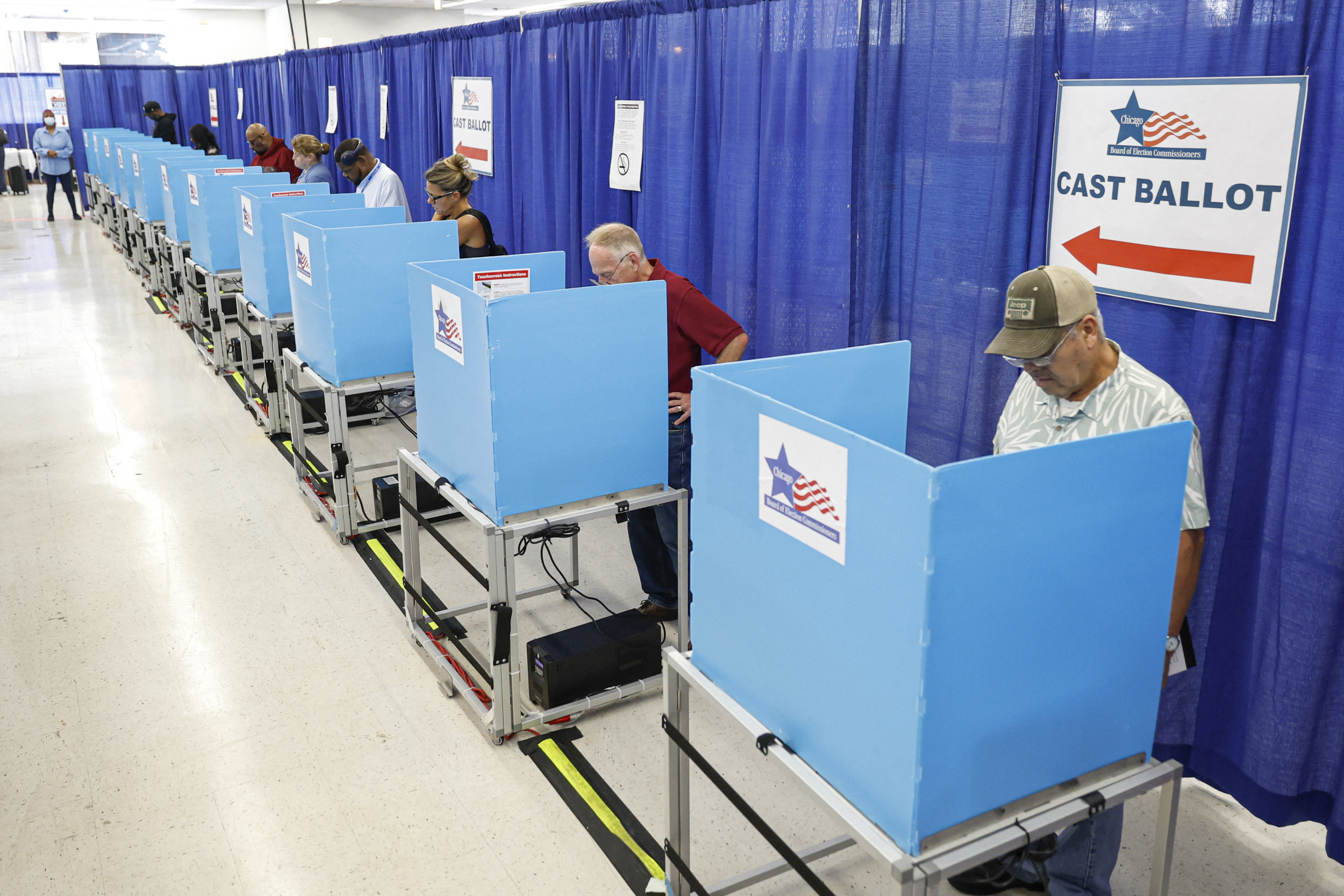- A Trump victory and Republican control of Congress after the US election could be bullish for the US Dollar.
- A blue sweep would likely hurt the Greenback, but the most probable scenario of a divided government could temper any big move.
- Tariff policy is key, but also other factors not directly related to the White House such as the Fed’s moves or geopolitics.
The US Dollar (USD) has regained lost momentum against its six major rivals at the beginning of the final quarter of 2024, as tensions mount ahead of the highly anticipated United States (US) Presidential election due on November 5.
Alongside the presidential election, 468 seats in the US Congress (33 of the 100 Senate seats and all 435 House seats) are due for a contest on the same day.
How could US election outcome influence US Dollar?
Following a dramatic campaign, investors eagerly await the election outcome to assess its impact on the US Dollar. The elected government will decide on the trade and fiscal policies, which will have significant implications on the US economic and inflation outlook, eventually impacting the value of the USD.
The impact of these policies, however, could pan out in the medium to long term. Meanwhile, the performance of the Greenback will also depend on factors that aren’t always directly related to who stays in the White House, from monetary policy to the global geopolitical situation.
The electoral vote could result in a victory for either the ruling Democratic Party or the Republican Party (Red Sweep) or a “divided government”, which is projected as the most likely outcome.
At present, the House is under Republican control while the Senate has a Democratic majority, representing a divided government. The full control of both houses of Congress is a win-win situation for either of the parties, as it enables the ease of policy implementation.
The two candidates contesting the US presidential race – Republican nominee Donald Trump and his Democratic counterpart and Vice President Kamala Harris – have contrasting views on several policy matters, keeping USD traders on edge amidst potential policy uncertainty or continuity.
That said, let’s analyze three probable outcomes and how each of them could affect the US Dollar’s performance in the months ahead.
Democratic victory
In a scenario where the Democratic nominee Kamala Harris emerges victorious in the presidential elections, a continuation of policies from President Joe Biden’s administration is likely to ensue. Harris is expected to remain conservative on the fiscal expansion and also maintain the current trade policies, which could hinder better prospects for US economic growth. This could render USD negative.
A Blue Sweep, with Democrats securing a majority in both Houses of Congress, could be seen as the most discouraging outcome for the US economy and thus for the Greenback.
“Asia FX is likely to rally the most in the event of a Harris victory without Congress, while the broadest US Dollar losses would likely be in a Blue Sweep,” Deutsche Bank analysts said in a research note.
Republican win
Former US President Donald Trump has been vocal about his plans to raise tariffs on Chinese imports to 60% or higher if re-elected. If that materializes on a Trump victory, it could reignite the US-Sino trade war and threaten the already ailing Chinese economy.
Such a move could amplify China’s response on the trade front globally, prompting major economies to devalue their currencies to limit the impact of the trade barrier. The US Dollar is set to gain in this scenario. Note that China is the world’s biggest trading nation.
If the trade war intensifies worldwide, investors could run for cover in the world’s reserve and safe-haven currency, the US Dollar.
A Republican victory with the Congress, a Red Sweep, will play out the most bullish scenario for the buck. Trump has always leaned in favor of higher fiscal spending and tax cuts, which could be pro-US economic growth and hence, the USD. Additionally, expansionary fiscal policy could fuel more spending and lead to high inflation, implying higher interest rates environment and a strong US Dollar.
The magnitude of any moves in currency pairs is likely to be larger in the scenario of a red sweep than in a blue sweep, the DB analysts say. “There is likely to be a large degree of variation in market response across different currency pairs: we see the US Dollar rising across all currency pairs in a red sweep. We see the dollar strong but FX carry trades as most likely to suffer in a Trump victory without Congress,” they add.
Divided government
As mentioned above, the most likely result is a divided government, where the opposing party controls one or both Houses of Congress. Such an outcome is expected to have a limited impact on the ongoing US Dollar recovery in the near term, in the face of potential policy deadlock. Economists at Morgan Stanley noted that they “don’t see a significant difference in public spending regardless of which party wins the executive branch.”
To conclude
The US Dollar reaction to the election outcome could be short-lived in the near term, as it is difficult for markets to price in the effects of the policies implemented by the winning party over the medium- to long-term. Also, investors will be quick to shift their focus back to the monetary policy and the economic outlook once election-induced volatility subsides.
US Dollar PRICE This month
The table below shows the percentage change of US Dollar (USD) against listed major currencies this month. US Dollar was the strongest against the Japanese Yen.
| USD | EUR | GBP | JPY | CAD | AUD | NZD | CHF | |
|---|---|---|---|---|---|---|---|---|
| USD | 2.96% | 3.15% | 5.02% | 2.29% | 3.48% | 4.95% | 2.42% | |
| EUR | -2.96% | 0.18% | 2.01% | -0.65% | 0.51% | 1.93% | -0.54% | |
| GBP | -3.15% | -0.18% | 1.84% | -0.83% | 0.30% | 1.75% | -0.71% | |
| JPY | -5.02% | -2.01% | -1.84% | -2.60% | -1.47% | -0.08% | -2.48% | |
| CAD | -2.29% | 0.65% | 0.83% | 2.60% | 1.17% | 2.60% | 0.12% | |
| AUD | -3.48% | -0.51% | -0.30% | 1.47% | -1.17% | 1.41% | -1.05% | |
| NZD | -4.95% | -1.93% | -1.75% | 0.08% | -2.60% | -1.41% | -2.41% | |
| CHF | -2.42% | 0.54% | 0.71% | 2.48% | -0.12% | 1.05% | 2.41% |
The heat map shows percentage changes of major currencies against each other. The base currency is picked from the left column, while the quote currency is picked from the top row. For example, if you pick the US Dollar from the left column and move along the horizontal line to the Japanese Yen, the percentage change displayed in the box will represent USD (base)/JPY (quote).














